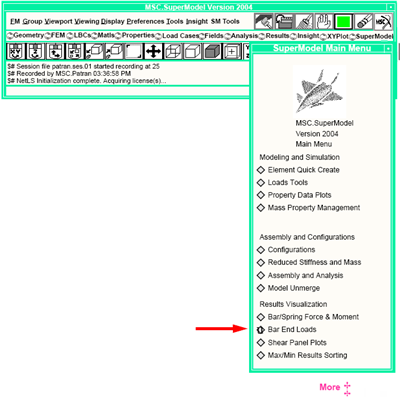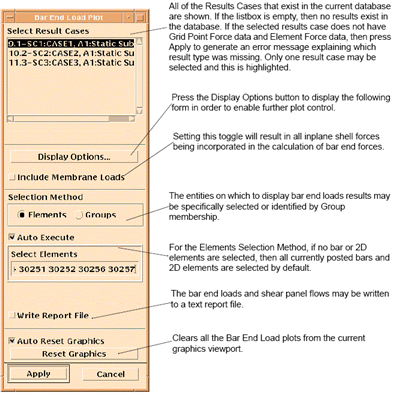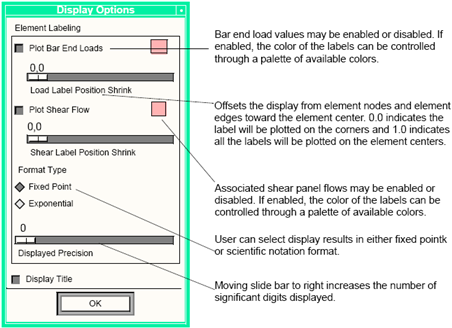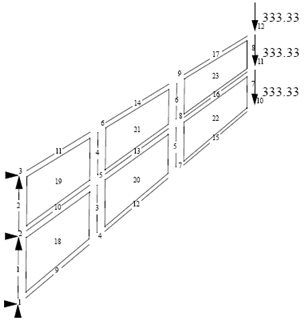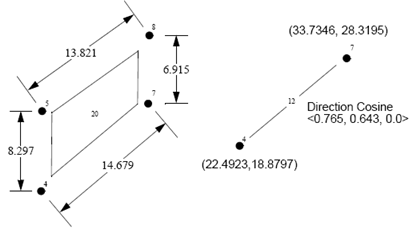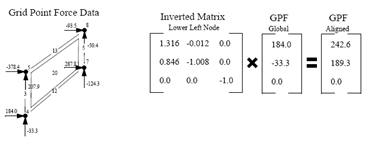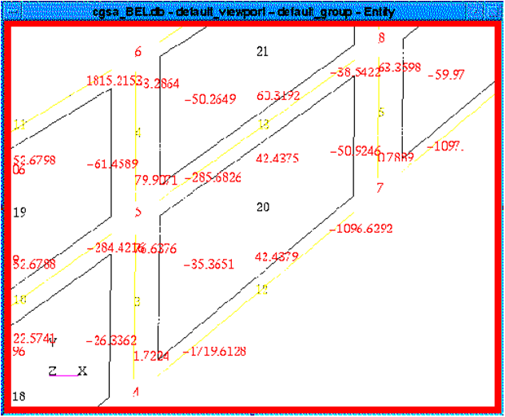XXXXXXXXXXXXXXXXXXXXXXXXXXXXXXXXXXXXXXXXXXXXXXXXXXXXXXXXXXXXXXXXXXXXXXXXXXXXXXXXXXXXXXXXXXXXXXXXXXXXXXXXXXXXXXXXXXXXXXXXXXXXXXXXXXXXXXXXXXXXXXXXXXXXXXXX''"> Bar End Loads
Bar End Loads plots the bar end loads as calculated from the grid point and element forces. This function requires the existence of a Grid Point Force Balance Table and Element Force Table as produced during an MSC.Nastran analysis.
The Bar End Loads results application is accessible from the MSC SuperModel main menu.
When the Bar End Loads application is selected on the MSC SuperModel main menu, the following form is displayed.
Requirements
There are certain requirements that must be met in order for the bar end forces to be plotted.
1. The MSC.Nastran analysis must be run with GPFORCE=ALL and FORCE(SORT1, REAL, BILIN)=ALL in the Case Control for all subcases. PARAM,POST,-1 must appear in the Case Control or Bulk Data Section of the input file to ensure that the Grid Point Force Balance Table is written to an OUTPUT2 file. This is automatic when MSC.Patran is used to create the input deck.
2. The existence of two results quantities in the database is required for the execution of the Bar End Loads application. The name of these results can be seen in the Results application. They must not be altered or deleted. The labels are:
• Grid Point Forces, Elements
• Bar Forces, Translational
Description of Calculations
Figure 5‑3 is a simple model that is used to show a sample calculation. It is fixed on the left side and loaded with 1000 lbs. force distributed to the 3 nodes on the right. All the elements are in the XY plane.
Figure 5‑3 Bar End Loads Example
For the example calculations, Elements 12 and 20 are used. Element 20 is a quad element with membrane properties. Element 12 is a bar element with CBAR properties.
This Bar End Loads and Shear Panel Flow calculation requires the Grid Point Force data to be aligned along the panel element edge. For each element node, a matrix of the direction cosines of the two adjacent edges and the normal to those directions is inverted.
The inverted matrix is then multiplied by the Global Grid Point Force for that element at that node.
These transformed values are used for the remaining calculations in which Grid Point Force data is required.
The Bar End Loads are calculated using the Bar Force loads from the results file. The Bar Force results contain the element axial load values. The Grid Point Force for each end of the bar element is subtracted from the axial load for each element. These become the bar end loads for that bar element.
A plot of this example appears in
Figure 5‑4.
Figure 5‑4
